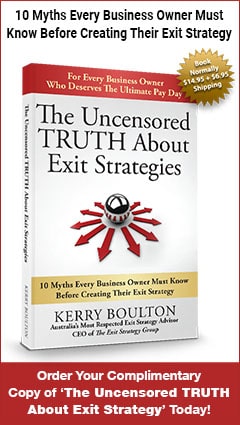How Your Marketing Strategy Affects Your Exit Strategy

On their own, each of these are talked about on a regular basis and they each have their own immense value whenever they’re implemented correctly.
However, both terms can be combined for amazing results. Whether you believe it or not, both terms have results that tie in very closely with each other. When one is implemented properly, it greatly benefits the other, and vice versa.
For instance, your marketing strategy plays a major role in determining how valuable the business is when the exit strategy is finally executed. On the other side of the same coin, having a well-defined exit strategy can make building and marketing the business significantly easier, too.
Each of these requires a different approach, but they can both be thought about and implemented by the same people.
Marketers can take a different approach to growing the business if they have an exit strategy in mind. Likewise, exit planners and strategists can help guide the marketing teams and keep their eyes on the big prize — making an exit one day. You can learn how to develop the best marketing strategy for your case with marketing training.
To build a truly successful business, these concepts need to co-exist. Here’s why.
Your Marketing Strategy
Your marketing strategy is the tactical blueprint that you’re going to follow and aligns perfectly with the goals of the business. A good marketing strategy is going to be easy to implement and widely diverse, utilizing a large array of marketing channels.
For your marketing strategy to work, you’re going to need to address how you will approach each different channel, from SEO, to SEM, advertising, your content marketing plan, blogging, television buys, display advertising, retargeting, text-based campaigns, print campaigns, trade shows, and more.
The goal for every marketing plan should be to position the brand and business in a positive light to the market, in order to capture segments of the market and convert them into leads and then into sales and new customers.
Simple, yeah? Good, let’s move onto the exit strategy.
Your Exit Strategy
Every business owner, whether they want to admit it or not, builds their business with the thoughts that they may one day sell it to an investor.
If they built it as a passion project with the intentions of keeping it indefinitely, thoughts have still rolled around their head about what type of person would potentially buy the business from them if they encountered hard times and needed to make an exit.
Because the ultimate goal here is to sell the business to an investor or another company, the most pressing plans should be focused around how to gain new clients, increase the sales volume, and grow the bottom line.
These figures will translate into a higher valuation when investors begin looking into the business and will help the business owner make an exit for the highest price possible.
Timing plays a large role in how much a business is worth, but with high lifetime customer values and gross revenues, timing plays less of a role in the valuation, due diligence, and negotiation phases.
Why They Need to Co-Exist
As a broker, I believe that both of these strategies play a very important role and affect each other. When you dig deeper, you realize there is a lot more in play.
An exit strategy typically has a time limit tied to it, and the strategy must constantly change and evolve over that course of time to make sure the business is staying on track and can be sold when the time limit is up.
For marketing, we often do not think about the exit strategy because the marketing strategies are going to continue moving forward, and the sales will continue to grow.
This is a self-perpetuating cycle that will, hopefully, continue the way the business needs it to in order to keep the sales ticking upwards.
Being on both sides of the equation, I strongly suggest that marketers should start thinking about how customer conversions translate into an exit strategy and make sure they’re ready to adjust and pivot to make sure the end goals are being met.
The end goal, in this case, would be to bring in higher numbers of leads while also working with the sales team to convert a higher percentage of those leads into new customers. This can be challenging, especially if the industry you’re in has a longer-than-normal sales cycle.
Your “Marketing for an Exit Strategy”
The “marketing for an exit” strategy combines the best of both worlds, but must be clearly defined so all of your teams know exactly what needs to happen.
It, absolutely, cannot be something as ambiguous as “let’s sell a lot of products”. Your marketing may help aid your sales team, but the sales process goes far deeper than this.
You will also want to make sure you have clearly defined the “marketing for an exit” strategy that has goals with very specific numbers attached to each goal.
For instance, who are your ultimate customers? Where do they fall into your sales funnel? How do you define them as “qualified”? What products and services do you sell that they are interested in? What makes them interested in those products and services? Are those customers ready to purchase right now?
These are just some of the questions that you’re going to need to define whenever you’re putting together a “marketing for an exit” strategy if you want it to perform and become a reality one day.
The strategy that you use should be closely tied to every lead that comes into your sales funnel, and all qualified leads that get pushed through to your sales team.
You can even go one step further and make sure that all of your marketing plans are tied to your ROI and your monthly sales. Pick the goals that work for your specific teams, and make sure that everyone in those teams are on the same page with everyone else.
Make sure they understand which goals are the most important and which will have the biggest impact on your final goal, making an exit.
Guest post from Jock Purtle, Founder DigitalExits.com



Recent Comments